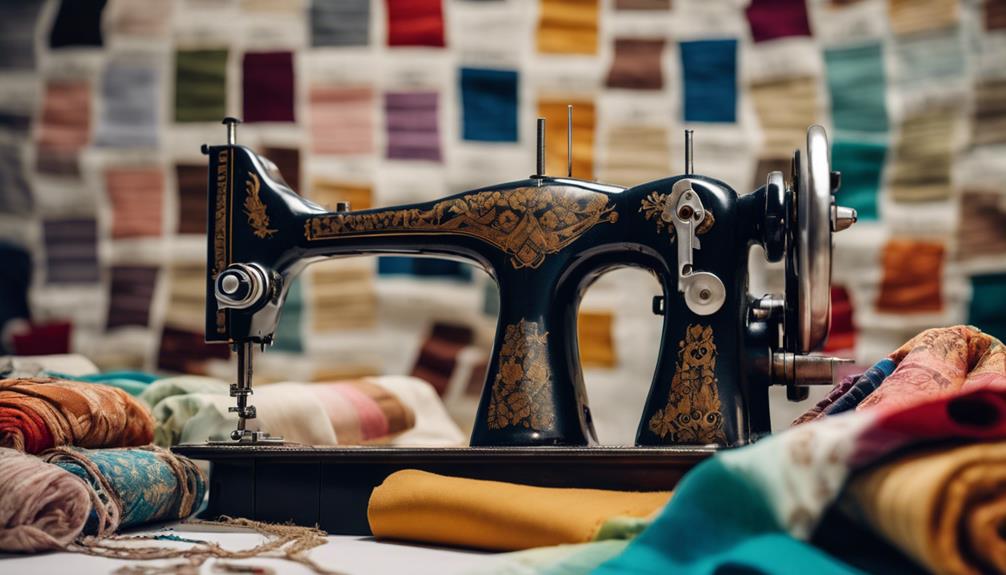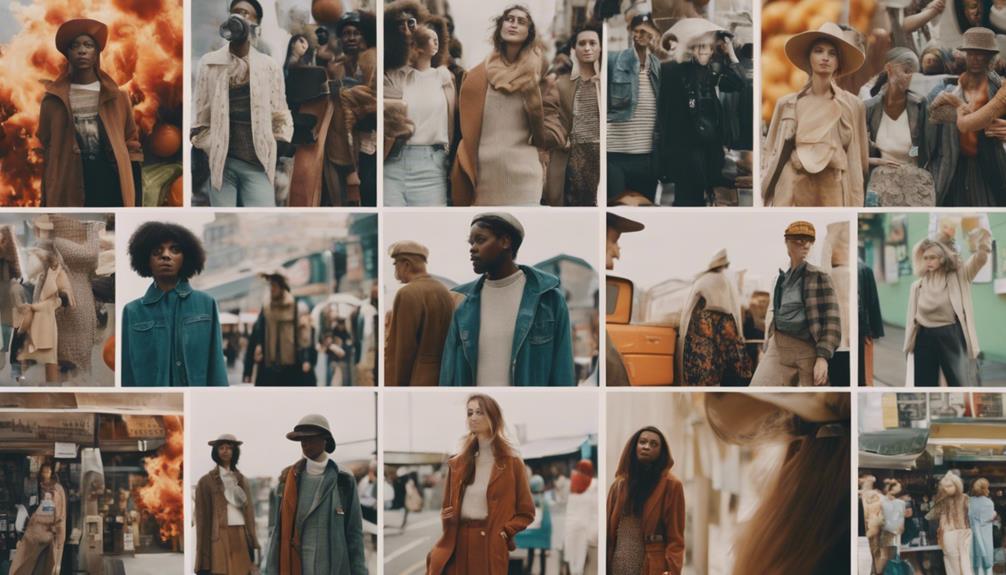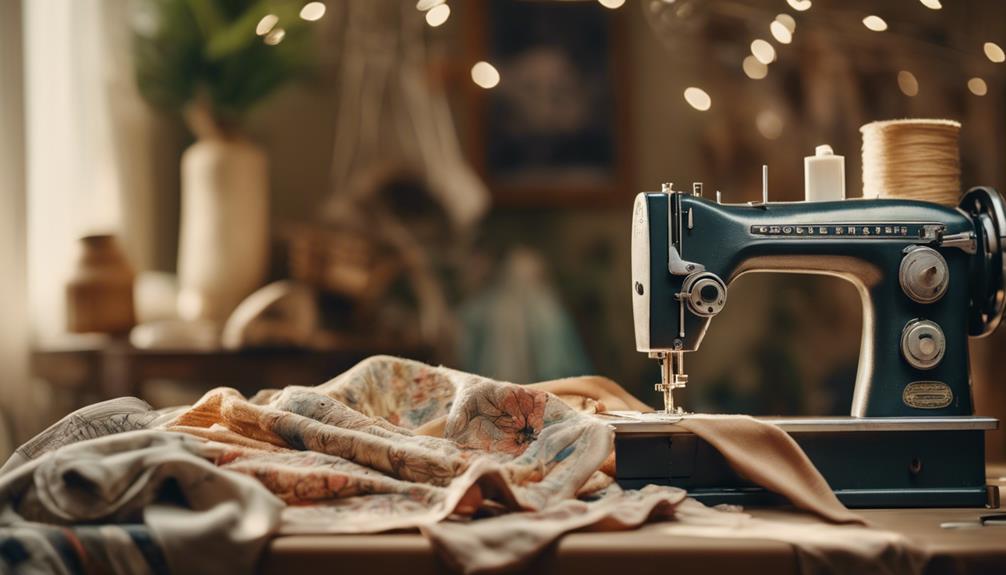Sustainable fashion has a rich history, starting back in the 1960s as a response to mass production and consumerism. Embraced by the hippie movement, it focused on quality, natural materials, and mindful consumption. This slow fashion philosophy set the stage for the ethical fashion movement of the 1980s, shining a light on social issues and promoting fair practices. The evolution of this movement over the years, especially after the Rana Plaza tragedy in 2013, has been truly remarkable. If you’re interested in how sustainable brands have influenced modern fashion, there’s a world of discoveries awaiting you! While sustainable fashion has gained popularity in recent years, with big brands adopting eco-friendly practices, there’s still a demand for independent sustainable brands that prioritize ethics and transparency. So, who benefits most from sustainable fashion? It’s for anyone who values environmental responsibility, ethical practices, and high-quality, long-lasting clothing. Discover more about sustainable fashion and join the movement towards a greener future!
Key Takeaways
- Sustainable fashion began emerging in the 1960s, influenced by the slow fashion movement advocating for quality over quantity.
- The 1980s saw the rise of ethical fashion, focusing on social issues within the clothing industry.
- The term "fast fashion" was coined in the 1990s, highlighting the negative impacts of mass production on sustainability.
- The Rana Plaza collapse in 2013 intensified global awareness and demand for sustainable practices in the fashion industry.
Origins of Sustainable Fashion
The origins of sustainable fashion emerge from the 1960s, when a growing discontent with mass production sparked a movement toward ethical and eco-friendly clothing practices.
This shift gave rise to the slow fashion movement, which emphasized quality over quantity, advocating for natural fabrics and upcycling practices.
As you explore this world, you'll discover how the hippie movement championed eco-friendly materials and simpler lifestyles, laying the groundwork for today's sustainable fashion movement.
Key Historical Milestones

Several key historical milestones have shaped the evolution of sustainable fashion, marking significant shifts in consumer awareness and industry practices. You can trace the beginnings of sustainable fashion back to the 1960s with the slow fashion movement, which emerged in response to the fast fashion trends that gained traction in the 1990s. By the 1980s, ethical fashion started gaining momentum, underscored by campaigns like Katharine Hamnett's that spotlighted the environmental impact and social injustice within the fashion industry.
The 2013 Rana Plaza factory collapse was a turning point, igniting global outrage and a demand for transparency in production processes. Brands like Patagonia and People Tree embraced sustainable practices, leading the way for eco-conscious consumers. Here's a quick look at some milestones:
| Year | Milestone | Impact on Fashion |
|---|---|---|
| 1960s | Emergence of Slow Fashion | Shift towards mindful consumption |
| 1980s | Rise of Ethical Fashion | Increased awareness of social issues |
| 1990s | Coining of Fast Fashion | Surge in consumer demand for low-cost clothing |
| 2013 | Rana Plaza Collapse | Call for transparency and ethical practices |
These milestones illustrate the ongoing journey towards sustainable fashion.
The Impact of Fast Fashion

Fast fashion has serious implications for both the environment and the economy.
With its rapid production cycles and disposable mentality, you're contributing to significant waste and pollution.
It's time to reflect on how your clothing choices affect the world around you.
Environmental Degradation Overview
Fashion's rapid production and consumption cycles are driving substantial environmental degradation, making it essential to understand the impact of fast fashion on our planet. The fast fashion industry is one of the most polluting sectors, responsible for 10% of global greenhouse gas emissions. This resource-intensive clothing production leads to alarming statistics, including that approximately 35% of ocean microplastics come from laundering synthetic textiles, which are common in fast fashion.
Moreover, a staggering 60% of clothing items end up in landfills or incinerators within a year, contributing to massive fashion waste. The production of a single cotton shirt requires around 2,500 liters of water, showcasing the environmental impact of our clothing choices. If trends continue, fast fashion could consume 26% of the global carbon budget by 2050, considerably exacerbating climate change.
| Environmental Impact | Statistics |
|---|---|
| Greenhouse Gas Emissions | 10% of total |
| Ocean Microplastics | 35% from fashion |
| Clothing Waste | 60% discarded within a year |
| Water Usage | 2,500 liters per shirt |
| Carbon Budget Consumption | 26% by 2050 |
Embracing sustainable practices and a circular economy is vital for mitigating these effects.
Economic Consequences Explained
The economic ramifications of the fast fashion industry are profound, impacting both global markets and local communities as it fosters a culture of disposability and waste. Fast fashion contributes notably to economic instability, with the apparel and footwear industries accounting for about 8% of global greenhouse gas emissions. This highlights the environmental cost intertwined with economic impacts.
The model encourages overproduction, leading to an astonishing 60% of clothing ending up in landfills or incinerators within a year. This situation creates an economic burden, as fashion waste is projected to rise to 148 million tons by 2030. The inefficiency of fast fashion results in a staggering estimated loss of $100 billion annually due to the failure to recycle and repurpose textile resources effectively.
If current trends continue, the fashion industry may consume 26% of the global carbon budget by 2050, exacerbating resource scarcity and leading to dire economic consequences. Shifting to sustainable fashion isn't just a trend; it's a necessity for better waste management, recycling, and ultimately, economic sustainability.
Evolution of Consumer Awareness

You've likely noticed a significant shift in how consumers view fashion over the years.
Key awareness milestones, like the Rana Plaza tragedy and impactful documentaries, have sparked a growing demand for transparency and sustainability.
As you explore the evolution of consumer preferences, you'll see how these changes have influenced brand practices and shaped the industry.
Key Awareness Milestones
Over the past few decades, key awareness milestones have transformed how consumers view and engage with ethical and sustainable practices in the fashion industry. The tragic Rana Plaza factory collapse in 2013 was a turning point, exposing the unsafe working conditions in fast fashion. This event sparked heightened consumer scrutiny, prompting many to question the ethics behind their clothing choices. Documentaries like *The True Cost* further illuminated the environmental and social costs of fast fashion, encouraging a shift towards sustainable fashion.
Organizations like the Clean Clothes Campaign, founded in 1989, have worked tirelessly to advocate for garment workers' rights, making ethical fashion a priority for many consumers. By 2021, a significant 42% of millennials and Gen Z expressed interest in buying secondhand clothing, showcasing a preference for sustainability over traditional retail options.
Additionally, social media has played an essential role in promoting transparency within the fashion industry, empowering consumers to demand accountability from brands. As awareness of these issues grows, individual choices can contribute to a more sustainable future in fashion, influencing the industry to adopt better practices.
Impact of Documentaries
Documentaries have profoundly shaped your understanding of sustainable fashion, revealing the hidden costs and ethical dilemmas behind the industry's practices. Films like *The True Cost* have exposed the environmental impact and social injustices tied to fast fashion, serving as a wake-up call for many viewers. Following pivotal events like the Rana Plaza factory collapse in 2013, consumer awareness surged, leading to increased scrutiny of brand practices.
These documentaries sparked a cultural shift, particularly among millennials and Gen Zers, who now prioritize sustainability in their purchasing decisions. By 2020, a significant 60% of consumers considered sustainability when shopping, with 71% of millennials indicating they factor it into their choices. This heightened awareness has also driven a growing interest in secondhand clothing, as 42% of millennials and Gen Z actively seek pre-loved options as sustainable alternatives to fast fashion.
Ultimately, the impact of documentaries on consumer behavior has been profound. They've not only educated viewers about the ethical implications of their fashion choices but also inspired a movement toward more responsible consumption, making sustainable fashion a priority in today's marketplace.
Shifting Consumer Preferences
The surge in consumer awareness around sustainable fashion has led to a significant shift in shopping preferences, as people increasingly demand transparency and ethical practices from brands. This change is fueled by a growing recognition of the environmental impact of fast fashion and the ethical concerns surrounding it. You might notice that your shopping habits have evolved, reflecting a desire for more responsible choices.
Consider these key aspects shaping your preferences:
- Increased interest in secondhand clothing as a sustainable option.
- A demand for eco-friendly products that minimize harm to the environment.
- A focus on brands that prioritize ethical consumption and fair labor practices.
- A cultural shift towards valuing transparency in fashion supply chains.
With documentaries like 'The True Cost' shedding light on these issues, it's no surprise that, by 2021, 42% of millennials were looking to buy secondhand.
This evolution in consumer behavior underscores a collective move towards a more sustainable future, where ethical practices are no longer just a bonus but a necessity in the fashion industry.
Major Sustainable Fashion Brands

Exploring major sustainable fashion brands reveals a commitment to ethical practices and innovative materials that challenge the traditional fashion industry.
Brands like Patagonia have paved the way since 1973, advocating for environmental activism and introducing recycled polyester with campaigns like 'Don't Buy This Jacket.' Meanwhile, People Tree, established in 1991, emphasizes ethical fashion by offering Fair Trade certified clothing, ensuring social responsibility in their production processes.
Stella McCartney, launched in 2001, redefines luxury fashion by prioritizing cruelty-free practices and utilizing sustainable materials, including organic cotton and recycled fabrics. Eileen Fisher, founded in 1984, focuses on timeless designs while actively recycling and taking back old garments to minimize waste.
Reformation, emerging in 2009, captures the attention of younger consumers with trendy styles that prioritize sustainability. Their commitment to transparency in the supply chain and eco-friendly materials sets a standard for modern fashion.
Each of these brands not only offers stylish options but also embodies the core principles of sustainable fashion. By supporting them, you contribute to a more ethical fashion industry that values both people and the planet.
Innovations in Sustainable Practices

Innovations in sustainable practices are transforming the fashion industry, making it easier for brands and consumers to embrace eco-friendly choices. By integrating environmentally friendly materials and business models, the industry is moving towards a more sustainable future. Here are some notable innovations leading the charge:
- The use of recycled polyester made from plastic bottles to considerably reduce waste.
- The growing popularity of organic cotton, which requires less water and fewer pesticides, often backed by GOTS certification.
- The rise of fashion rental services, allowing you to enjoy various clothing options while minimizing waste from fast fashion.
- Embracing the circular economy through methods like upcycling and thrifting, which extend product lifespans and reduce resource consumption.
These innovations not only help reduce waste but also promote a culture of sustainability within the fashion industry. By choosing brands that prioritize these sustainable practices, you can contribute to a healthier planet and encourage more environmentally conscious choices in fashion.
Future of Sustainable Fashion

Future trends in sustainable fashion promise to redefine how you engage with clothing, emphasizing eco-friendly choices and ethical consumption.
As you become more aware of the impact of your purchasing decisions, you'll notice that sustainable fashion is gaining momentum. By 2025, the demand for eco-friendly solutions is expected to influence brand practices considerably, paving the way for innovations in sustainable materials like organic cotton and recycled textiles.
Millennials and Gen Z are at the forefront of this shift, with 75% prioritizing sustainability over brand loyalty. This increased consumer awareness is driving market growth, projected to expand at a CAGR of 9.7% from 2021 to 2028. Additionally, the adoption of circular economy principles, focusing on recycling and upcycling, aims to tackle the staggering 148 million tons of fashion waste expected by 2030.
As brands commit to sustainable practices, over 12.5% of the global fashion market was dedicated to ethical consumption by 2020. By choosing sustainable fashion, you play an essential role in promoting a healthier planet and fostering a culture that values eco-consciousness.
Embrace this change, and let your wardrobe reflect your values.
Frequently Asked Questions
When Did the Sustainable Fashion Trend Start?
The sustainable fashion trend started gaining traction in the 1960s, responding to mass production. By the 1990s, it blossomed, especially after key events like the Rana Plaza collapse, pushing you towards ethical choices in fashion.
When Did Sustainability Become Popular?
Sustainability became popular in the late 20th century, driven by increasing awareness of environmental issues. You've likely noticed how consumer preferences shifted towards eco-friendly practices and responsible choices, especially among younger generations in recent years.
Why Is Sustainable Fashion Becoming Popular?
Sustainable fashion's popularity skyrockets because you crave eco-friendly choices, driven by a desire to save the planet. Documentaries reveal shocking truths, while secondhand shopping becomes your stylish rebellion against wasteful consumerism.
Did You Know Facts About Sustainable Fashion?
Did you know sustainable fashion reduces waste, supports ethical labor, and promotes eco-friendly materials? It challenges fast fashion's harmful practices while encouraging you to make conscious choices that positively impact the environment and society.
Conclusion
As you explore the journey of sustainable fashion, it's fascinating to see how its roots intertwine with our evolving values.
Coincidentally, the rise of fast fashion sparked a wave of awareness, pushing us towards more mindful choices.
Today, you're not just a consumer; you're part of a movement that champions innovation and responsibility.
So, as you choose your next outfit, remember—you're not just wearing clothes; you're wearing a story of change and hope for a better future.









